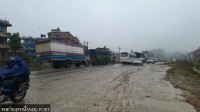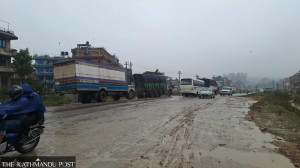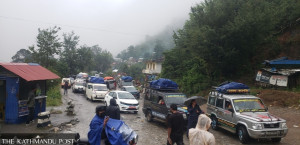Bagmati Province
Malnutrition not under control in Doramba, Ramechhap
Despite alarming cases of malnourishment reported among the children in the municipality, the local government accords little priority to health awareness programmes
Tika Prasad Bhatta
The local government in remote Doramba Rural Municipality of Ramechhap district has failed to implement a programme aimed at ending malnutrition in its population.
Rs 500,000 was allocated to organise health awareness programmes including a nutrition programme in the rural municipality but the amount has been used to construct a public toilet, according to locals.
The rural municipality this year allocated Rs 2.5 million for the purchase of medicines. Parbati Pathak, chief at the Health Section of the rural municipality, said that a majority of people are uneducated and unaware of the necessity of balanced diet to prevent malnutrition. According to her, many children are found to be malnourished in Daduwa of ward no 1 and the erstwhile Doramba ward no 1.
Pathak added that the health section has no exact data on the number of malnourished children. “The health facilities here only keep the data of children who seek treatment for malnutrition at the facilities here,” she said.
Despite alarming cases of malnourishment reported among the children in the municipality, the local government accords little priority to health awareness programmes.
After the April 2015 earthquake, the Tamakoshi Service Committee had identified some malnourished children and provided care and nutritious foods for them but the programme ended last year with nothing much
to show.
“We administer vitamin A supplements to the children but haven’t distributed nutritious food yet,” said Pathak, adding that a majority of the children in the rural municipality are found with mild malnutrition.
A survey carried out two years ago in the district showed that 74 children were found with severe malnutrition while 164 others suffered from mild malnutrition. Ram Chandra Pathak, senior public health administrator of the District Health Office, said that since distribution of funds to health programmes among others falls under the ambit of the local government, the health office does not have much idea about what’s exactly being done in terms of controlling malnutrition in the rural municipality.
Pathak said: “We don’t have information about any of the programmes being conducted at the local level including those related to health and nutrition.”
According to the WHO, lack of access to highly nutritious foods, especially in the present context of rising food prices, is a common cause of malnutrition in Nepal. The WHO says poor feeding practices, such as inadequate breastfeeding, consuming wrong foods and not ensuring nutritious food for children, contribute to malnutrition.




 21.12°C Kathmandu
21.12°C Kathmandu (1).jpg)














